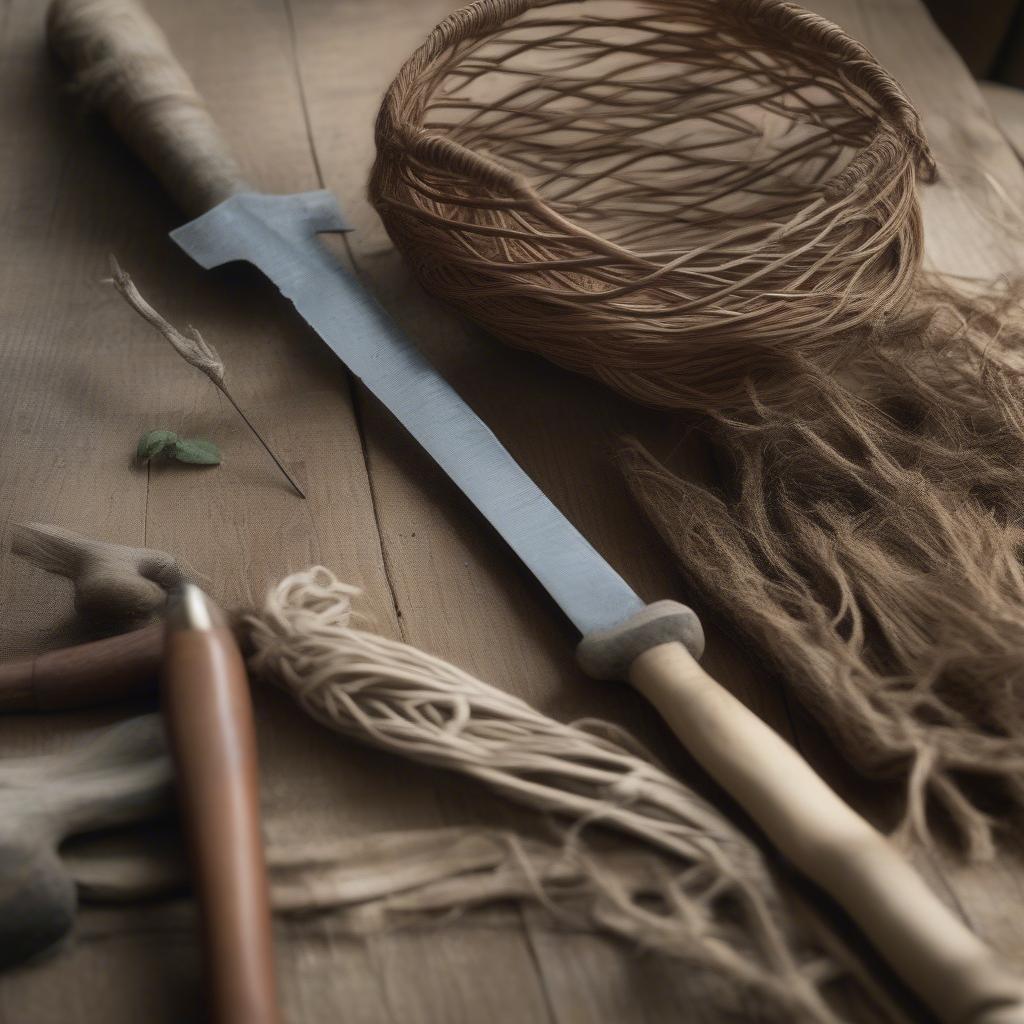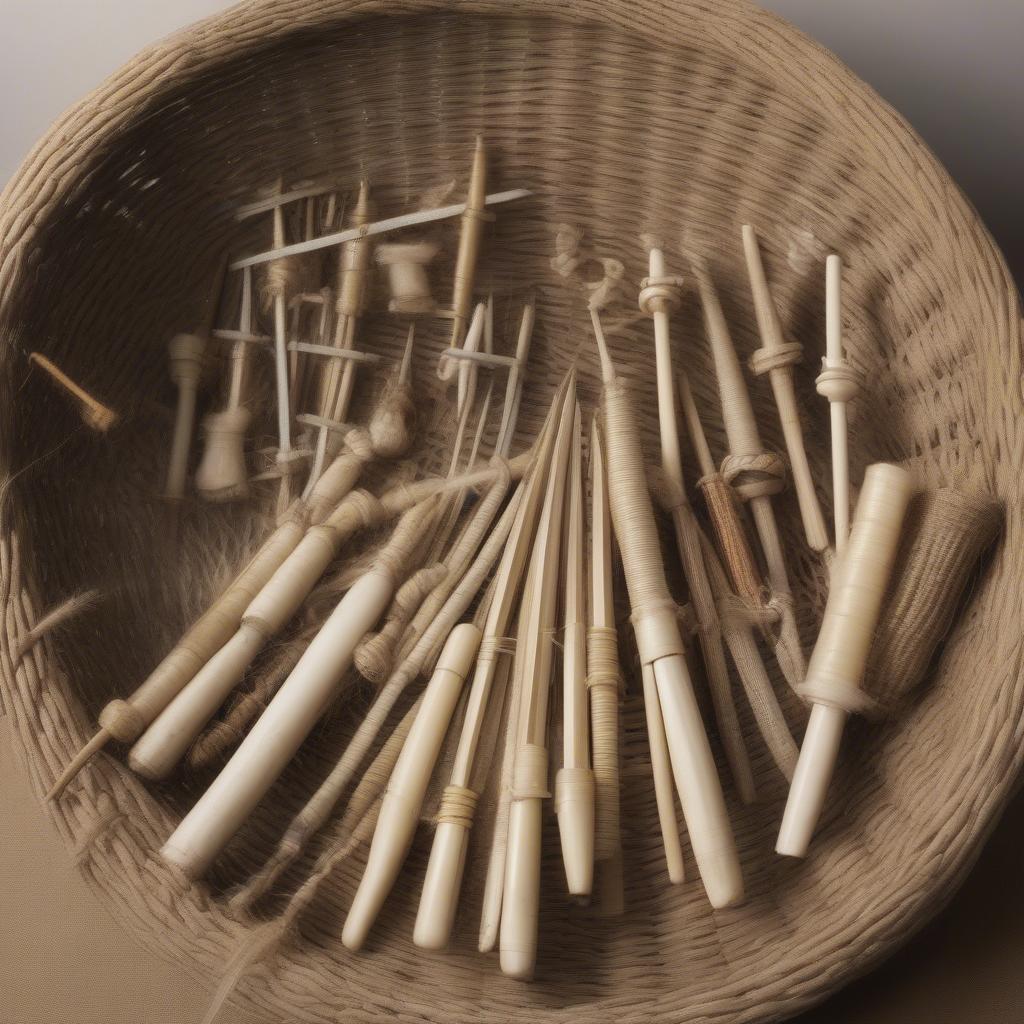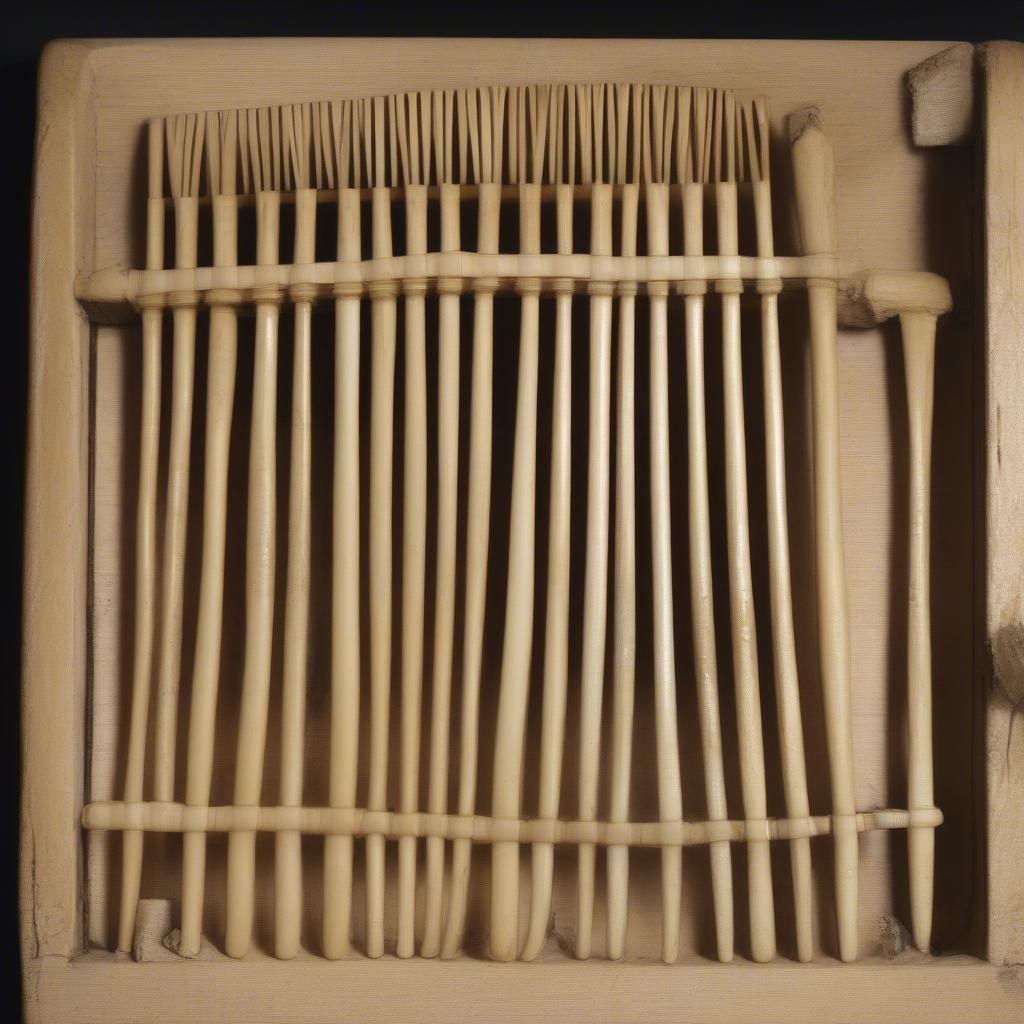Basket Weaving
Tools a Basket Weaver Would Use in Medieval Times
Basket weaving in medieval times was a crucial craft, providing essential storage and carrying solutions. Understanding the tools a basket weaver would use offers a glimpse into the resourcefulness and skill of artisans in this period. These tools, often crafted from readily available materials, were simple yet effective in transforming natural fibers into functional and sometimes even beautiful objects.
Essential Tools of the Medieval Basket Weaver
Medieval basket weavers relied on a small but versatile set of tools, often crafted themselves or by other local artisans. These tools were essential for harvesting, preparing, and weaving the materials into baskets. Let’s delve into the key tools they employed:
Knives and Awls: Shaping and Piercing
Knives were indispensable for harvesting and preparing materials like willow, reeds, and rushes. They were used to cut the plant material at the base, trim excess leaves and branches, and shape the rods for weaving. Awls, sharp pointed tools, were crucial for piercing holes, creating decorative patterns, and tightening weaves.
 Medieval Basket Weaving: Knives and Awls Used for Shaping and Piercing
Medieval Basket Weaving: Knives and Awls Used for Shaping and Piercing
Different types of knives and awls existed, depending on the specific materials being woven and the regional traditions. Some awls were made of bone or wood, while others were crafted from metal.
Bodkins and Needles: Weaving Intricacies
Bodkins and needles, though similar in appearance, served distinct purposes. Bodkins, larger and more robust than needles, were used to weave thicker materials and create the basket’s basic structure. Needles, finer and more delicate, were employed for weaving intricate details, adding decorative elements, and securing the finishing touches.
 Bodkins and Needles: Tools for Intricate Medieval Basket Weaving
Bodkins and Needles: Tools for Intricate Medieval Basket Weaving
The materials used for these tools varied. Bone, wood, and even antler were common choices, reflecting the resourcefulness of medieval craftspeople.
Beaters and Combs: Achieving a Tight Weave
A tight weave was essential for creating a sturdy and functional basket. Beaters, typically made of wood, were used to compact the woven rows, ensuring a strong and uniform structure. Combs, often crafted from wood or bone, helped to separate and align the woven fibers, creating a neat and even finish.
 Beaters and Combs for Tight Weaves in Medieval Basketry
Beaters and Combs for Tight Weaves in Medieval Basketry
What Materials Were Used in Medieval Baskets?
Medieval basket weavers primarily used readily available natural materials. Willow, reeds, rushes, and various grasses were popular choices due to their flexibility and abundance. The specific materials used often depended on the local environment and the intended use of the basket. For example, sturdier materials like willow might be preferred for larger baskets designed for carrying heavy loads, while finer reeds might be used for smaller, more delicate baskets intended for storing food or household items.
Frequently Asked Questions About Medieval Basket Weaving Tools
- Were medieval basket weaving tools specialized? While some tools had specific functions, many were multi-purpose, reflecting the practicality of the time.
- Did men and women weave baskets in the medieval period? Basket weaving was often a shared craft, with both men and women participating in its various stages.
- How long did it take to make a basket in medieval times? The time required varied depending on the size, complexity, and materials used. A simple basket could be made in a day, while more elaborate pieces could take several days or even weeks.
- Were medieval baskets decorated? While functionality was paramount, some baskets were decorated with dyed fibers, carved handles, or other embellishments.
- Are any original medieval basket weaving tools preserved today? While rare, some examples of medieval basketry tools have survived in archaeological contexts, offering valuable insights into the craft.
- What was the social significance of basket weaving in the Middle Ages? Basketry was an essential craft, providing necessary containers for storage, transport, and everyday life. It was often a communal activity, contributing to social bonds within communities.
- Where can I learn more about medieval crafts? Museums, historical societies, and online resources offer a wealth of information about medieval crafts, including basket weaving.
Conclusion
The Tools A Basket Weaver Would Use In Medieval Times were simple yet effective, enabling them to create essential items for daily life. From knives and awls for preparing materials to bodkins, needles, beaters, and combs for shaping and weaving, these tools reflect the ingenuity and resourcefulness of medieval craftspeople. Studying these tools offers a fascinating glimpse into the history and techniques of a craft that has endured through the centuries. Need help finding the perfect basket weaving tools for your next project? Contact us at Hanoi, Vietnam or Tech Avenue, Suite 12, San Francisco, CA 94105, USA. Our 24/7 customer service team is ready to assist you.
